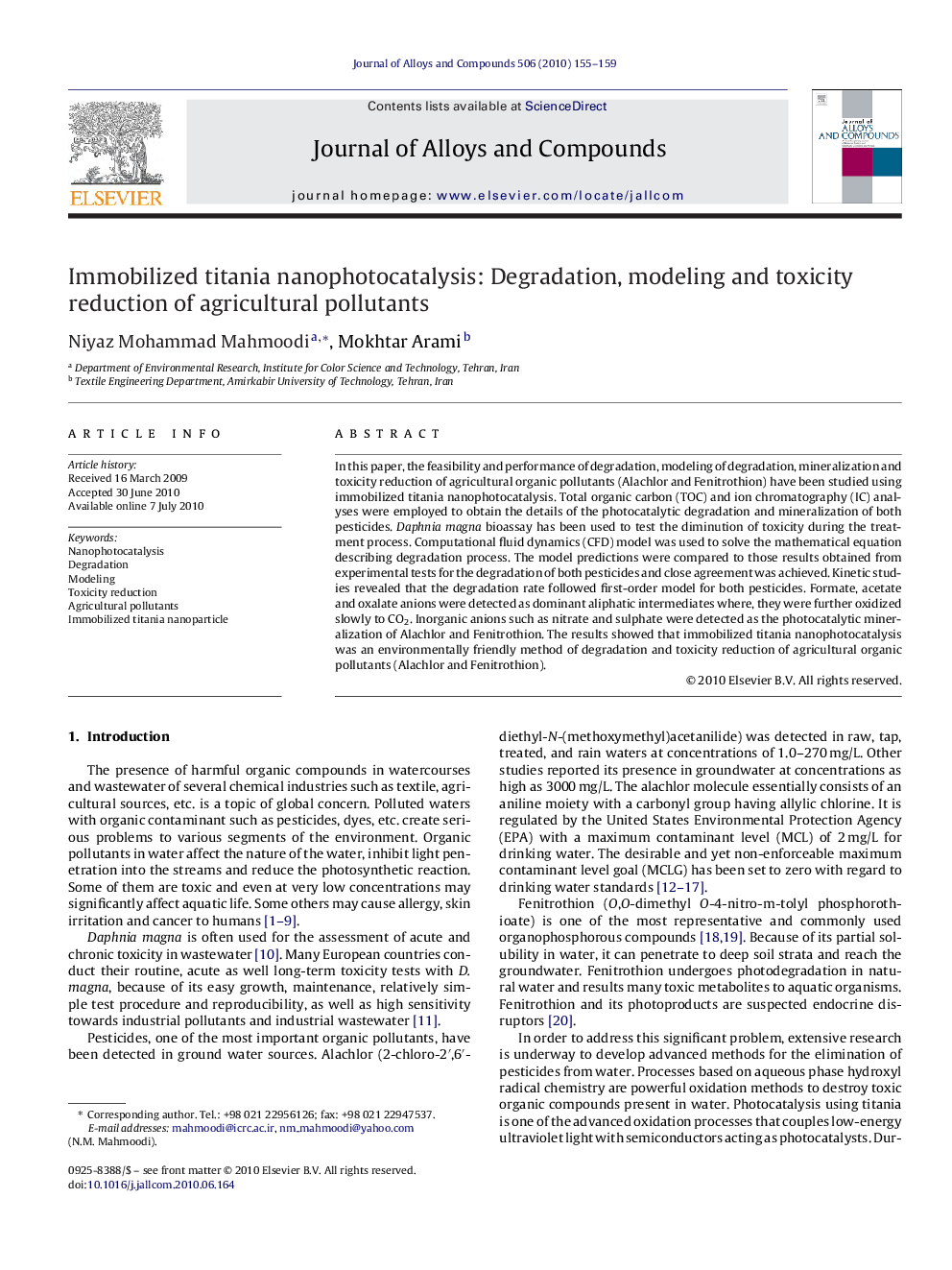| Article ID | Journal | Published Year | Pages | File Type |
|---|---|---|---|---|
| 1618527 | Journal of Alloys and Compounds | 2010 | 5 Pages |
In this paper, the feasibility and performance of degradation, modeling of degradation, mineralization and toxicity reduction of agricultural organic pollutants (Alachlor and Fenitrothion) have been studied using immobilized titania nanophotocatalysis. Total organic carbon (TOC) and ion chromatography (IC) analyses were employed to obtain the details of the photocatalytic degradation and mineralization of both pesticides. Daphnia magna bioassay has been used to test the diminution of toxicity during the treatment process. Computational fluid dynamics (CFD) model was used to solve the mathematical equation describing degradation process. The model predictions were compared to those results obtained from experimental tests for the degradation of both pesticides and close agreement was achieved. Kinetic studies revealed that the degradation rate followed first-order model for both pesticides. Formate, acetate and oxalate anions were detected as dominant aliphatic intermediates where, they were further oxidized slowly to CO2. Inorganic anions such as nitrate and sulphate were detected as the photocatalytic mineralization of Alachlor and Fenitrothion. The results showed that immobilized titania nanophotocatalysis was an environmentally friendly method of degradation and toxicity reduction of agricultural organic pollutants (Alachlor and Fenitrothion).
